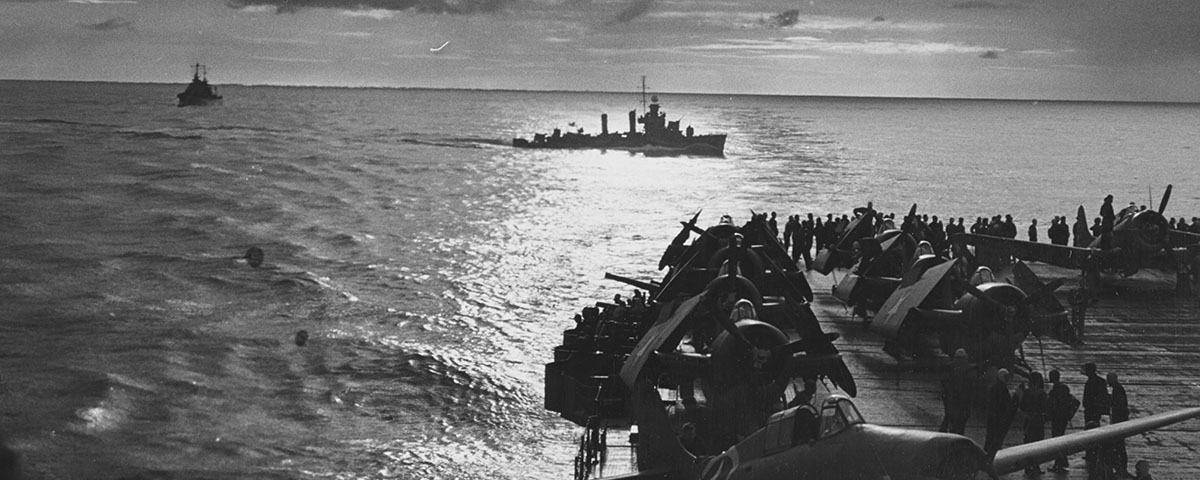In the run-up to D-Day, MHQ researcher Marc DeSantis finds some indirect keys to victory.
The Eastern Front
In 1943 Germany sustained over 2 million casualties battling the Soviets. In early July Adolf Hitler hurled the cream of his panzer troops against the formidable Soviet defenses around Kursk, and many of Germany’s finest soldiers were lost in the fighting, along with nearly 2,000 tanks. Subsequent Soviet offensives stretching into 1944 drove the Germans back, destroying ever more armor and troop strength.
Operation Double Cross
The Double Cross operation undertaken by British intelligence managed to turn every enemy agent in Britain into a double agent sending misinformation back to Germany, particularly about the pending Allied invasion. The most significant double agent was Spaniard Juan Pujol Garcia, code-named Garbo by his British handlers. Once the invasion of Normandy had begun, Garbo’s transmissions reinforced the German belief that it was merely a feint.
Practice
Prior to D-Day, the Allies undertook major amphibious landings at Dieppe, in North Africa, and in Sicily and Italy. Allied planners learned from experience and were determined to get all the elements of a successful seaborne invasion right. The result was superior preparation for Overlord.
Blunting the U-Boat Menace
1943 was the beginning of the end of the German submarine force in the Atlantic. Allied escort ships and aircraft employing new tactics and weapons sank increasing numbers of U-boats. Their loss cleared the way for the Allies to transport many thousands of fighting men and mountains of supplies to Britain in preparation for the 1944 invasion.
Operation Fortitude
This complex deception plan was aimed at convincing the German high command that the invasion of Normandy was just a diversion and that the true assault by Lieutenant General George Patton and his fictional First U.S. Army Group, or FUSAG, would come later at the Pas de Calais. The presumed threat there tied down some very powerful German formations that would otherwise have been thrown against the fragile Allied beachheads at Normandy.
Operation Ultra
The Allies cracked several German codes based on the impressive but vulnerable Enigma machine. Code-named Ultra, the operation gave Allied commanders timely information on German plans, operations, and troop dispositions and perhaps most important, whether the enemy had been deceived by Operation Fortitude.
French Resistance
The Resistance movement in France provided Allied planners with intelligence about the German troops in Normandy, and Resistance sabotage tied down hundreds of thousands of enemy troops. Once the invasion had begun, Resistance groups also struck at communications, railroads, bridges, and roads, helping to slow the German response.
German Command Problems
Most German commanders in France planned to fight the enemy inland, well away from the sea and the range of Allied naval guns. Field Marshal Erwin Rommel worried, though, that overwhelming enemy airpower would thwart that strategy. He believed that the Allies had to be defeated at the beach or they would not be stopped. This disagreement was never resolved and made an effective response to the invasion all the more difficult.
Transportation Plan
In the two months before D-Day, under General Dwight D. Eisenhower’s Transportation Plan, Allied warplanes dropped 195,000 tons of bombs on European railways, roads, and bridges in preparation for Overlord. The destruction hindered German ability to reinforce defenses quickly once the Normandy landings began.
Weather
The forecast for June 5, the original date for D-Day, was bad—low clouds and heavy seas. When skies lightened that morning, Eisenhower gave the go-ahead, and the invasion fleet sailed. The Germans believed that no invasion was possible in such wretched weather, and Rommel traveled back to Germany to visit his wife. On June 6, when the Allied attack began, the German defenders in Normandy were taken by surprise.


.jpg)



